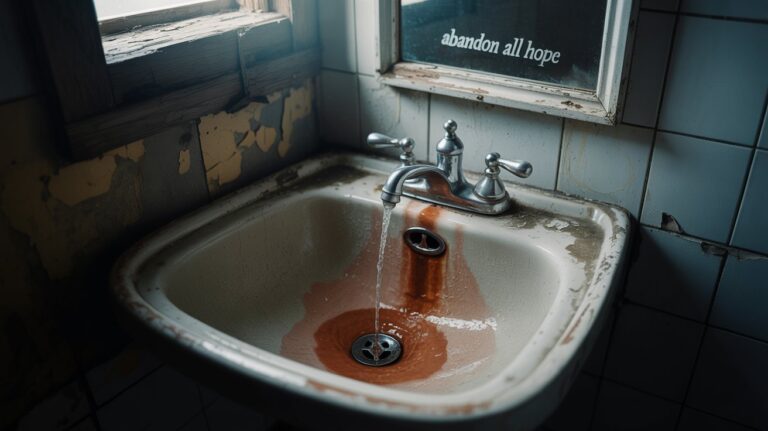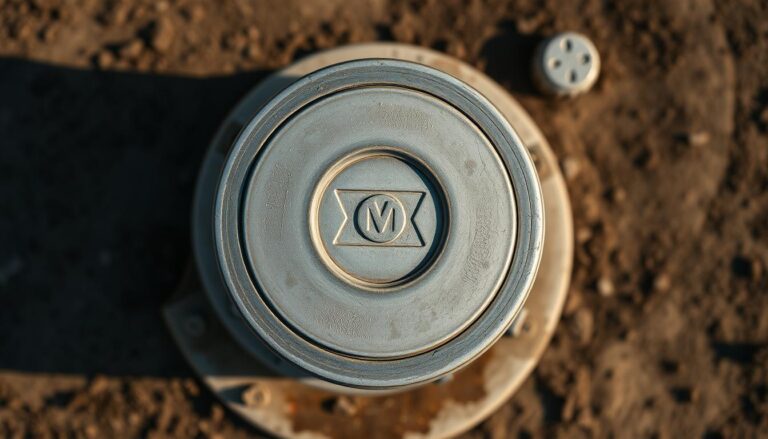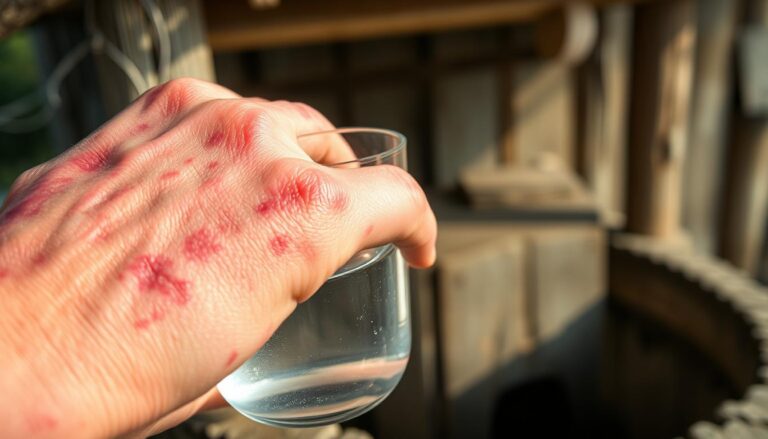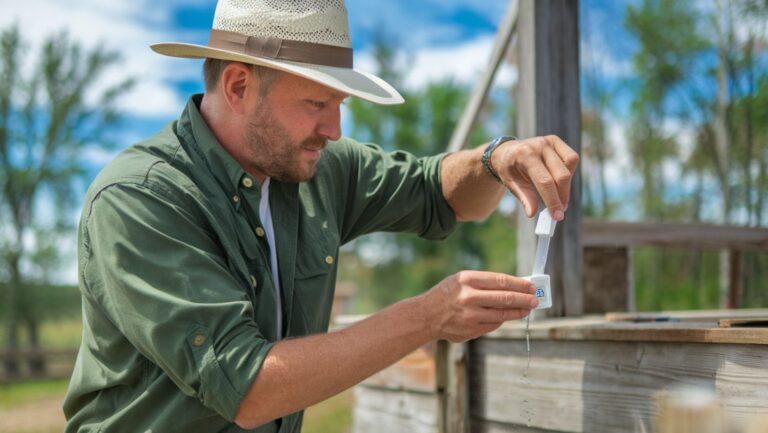Bathing in Well Water: What You Need to Know
Are you aware of the potential risks and benefits associated with bathing in well water? Many people rely on well water for their daily needs, but understanding its quality is crucial for maintaining healthy skin.
Unlike municipal water, well water is not treated, so it can contain various minerals, contaminants, and microorganisms. Regular testing is essential to ensure the water is safe for bathing.
Understanding the quality of your well water can help you mitigate potential risks and enjoy the benefits of bathing in this natural resource.
Key Takeaways
- Well water quality affects skin health.
- Regular testing is necessary for safe bathing.
- Understanding contaminants is crucial.
- Bathing in well water can be safe with proper precautions.
- Well water contains various minerals and microorganisms.
Understanding Well Water Systems
Unlike municipal water supplies, well water systems operate independently, drawing water from underground aquifers. This fundamental difference impacts the quality, treatment, and maintenance of well water.
How Well Water Differs from Municipal Water
Well water is drawn directly from the ground, bypassing the treatment process that municipal water undergoes. This means that well water can be more susceptible to contamination from surface activities, such as agricultural runoff or nearby waste disposal. In contrast, municipal water is treated and monitored regularly to ensure it meets safety standards.
Common Components of Well Water Systems
A typical well water system consists of a well or borehole, a pump, and sometimes a storage tank. The well is drilled into an underground aquifer, and the pump is used to bring water to the surface. Additional components may include filters, water softeners, and disinfection systems to improve water quality.
Well Water Composition in Different U.S. Regions
The composition of well water varies significantly across different regions due to geological differences. For example, wells in coastal areas may have higher salt levels, while those in agricultural regions may contain more nitrates.
| Region | Common Contaminants | Typical Water Characteristics |
|---|---|---|
| Coastal Areas | Salt, bacteria | High salinity, potential for saltwater intrusion |
| Agricultural Regions | Nitrates, pesticides | Higher levels of agricultural runoff contaminants |
| Mountainous Regions | Minerals, metals | Variable water hardness, potential for metal contamination |
Understanding these regional differences is crucial for managing well water quality effectively.
Can You Bathe in Well Water?
While well water is a valuable resource, its safety for bathing purposes requires careful evaluation. The quality of well water can vary significantly depending on several factors, including the well’s location, depth, and surrounding environment.
General Safety Considerations
Bathing in well water can be safe if the water is properly maintained and tested regularly. However, contaminated water poses significant health risks, especially for children and individuals with compromised immune systems. As one source advises, “Contaminated water should not be used for bathing, especially for children and disabled individuals, as it could lead to accidental ingestion.”
Factors That Determine Suitability for Bathing
Several factors determine whether well water is suitable for bathing. These include the presence of bacteria, viruses, and other microorganisms, as well as the concentration of heavy metals and other contaminants. Regular testing is crucial to identify potential issues before they become major problems.
Regulatory Guidelines for Well Water
While there are regulations governing drinking water quality, guidelines for well water used for bathing are less straightforward. Homeowners should familiarize themselves with local regulations and guidelines to ensure their well water meets necessary safety standards. This may involve periodic testing and maintenance to prevent contamination.
In conclusion, bathing in well water can be safe when proper precautions are taken. Regular testing, maintenance, and adherence to regulatory guidelines are key to ensuring the water is safe for bathing.
Benefits of Bathing in Well Water
Well water, rich in minerals and free from chemical treatments, offers several advantages for bathers. The unique composition of well water can provide a more natural bathing experience.
Natural Mineral Content
The natural mineral content in well water is one of its most significant benefits. Minerals such as calcium and magnesium not only contribute to the water’s hardness but also offer potential health benefits. For instance, bathing in water rich in these minerals can be therapeutic, helping to relax muscles and improve skin health.
Absence of Chemical Treatments
Unlike municipal water, which is often treated with chemicals like chlorine and fluoride, well water is typically free from these additives. This absence of chemical treatments can make well water a preferable choice for individuals with sensitive skin or those looking to minimize their exposure to such chemicals. For more information on the safety of bathing in well water with specific contaminants, you can visit our detailed guide on bathing in iron.
Potential Skin and Hair Benefits
Bathing in well water can have several benefits for the skin and hair. The mineral-rich content can help to nourish and moisturize the skin, potentially improving conditions like eczema or dermatitis. For hair, the absence of harsh chemicals can result in softer, healthier-looking locks. Many people report that bathing in well water leaves their skin feeling softer and their hair looking shinier.

Potential Risks and Concerns
Understanding the potential risks associated with bathing in well water is essential for ensuring a safe and healthy experience. While well water can be a natural and cost-effective option, there are several factors to consider before making it a regular part of your bathing routine.
Bacterial Contamination
One of the primary concerns with well water is the risk of bacterial contamination. Wells can be susceptible to surface contamination, especially after heavy rainfall or flooding, which can lead to the presence of harmful bacteria like E. coli in the water. For more information on the health risks associated with well water contamination, visit Iowa Department of Health and Human.
Heavy Metals and Chemical Contaminants
Well water can also contain heavy metals and chemical contaminants, such as lead, arsenic, and PFAS, which can pose serious health risks. These contaminants can enter the well water through various means, including agricultural runoff and industrial waste. It’s crucial to test your well water regularly to detect these contaminants.
Hard Water Issues
Hard water, which contains high levels of minerals like calcium and magnesium, is another common issue with well water. While not typically a health risk, hard water can cause scaling on fixtures and appliances, and may affect the effectiveness of soaps and shampoos.
Aesthetic Concerns: Color, Odor, and Taste
Aesthetic issues such as unpleasant color, odor, or taste can also be a concern with well water. For instance, the presence of iron or sulfur can give the water an unpleasant color or odor, making it less desirable for bathing.
In conclusion, while well water can be a viable option for bathing, it’s essential to be aware of these potential risks and take steps to mitigate them, such as regular testing and treatment when necessary.
Testing Your Well Water for Bathing Safety
Testing your well water regularly is a vital step in maintaining a safe bathing environment. Regular testing helps identify potential contaminants and ensures the water quality is suitable for bathing.
Essential Parameters to Test
When testing your well water, several key parameters should be evaluated. These include:
- pH levels: To ensure the water is not too alkaline or acidic.
- Bacterial contaminants: Such as E. coli and coliform bacteria.
- Nitrates and nitrites: High levels can indicate agricultural runoff or other contamination sources.
- Heavy metals: Including lead, arsenic, and mercury, which can be harmful to health.
| Parameter | Acceptable Level | Potential Health Risk |
|---|---|---|
| pH | 6.5-8.5 | Irritation, corrosion |
| E. coli | 0 CFU/100mL | Gastrointestinal illness |
| Nitrates | <45 mg/L | Blue baby syndrome, cancer risk |
| Lead | <0.015 mg/L | Neurological damage, developmental issues |
Testing Frequency Recommendations
It’s recommended to test your well water at least once a year for basic parameters. However, if you notice any changes in taste, odor, or color, or if there are nearby contamination sources, more frequent testing is advisable.
DIY Testing vs. Professional Testing
While DIY testing kits are available, they may not provide comprehensive results. Professional testing services can offer more detailed analysis and are particularly recommended if you suspect contamination.
Interpreting Test Results
Understanding your test results is crucial. If contaminants are detected, consult with a water quality expert to determine the best course of action to ensure your well water is safe for bathing.
Common Well Water Problems Affecting Bathing
Bathing in well water can be a unique experience, but it often comes with its own set of challenges. While well water is a natural resource, its quality can vary significantly, leading to different bathing experiences. Homeowners with wells should be aware of the common problems that can affect their bathing water.
Hard Water and Mineral Buildup
One of the most common issues with well water is its hardness, which is caused by high levels of minerals such as calcium and magnesium. Hard water can lead to mineral buildup on skin and hair, as well as on bathroom fixtures. This can result in dry skin and dull hair, making it essential to consider water softening options.
Iron and Rust Staining
Well water can contain high levels of iron, leading to rust staining on fixtures and potentially leaving skin and hair with an unwanted orange tint. Iron removal systems can be an effective solution to this problem, improving both the aesthetic and practical aspects of bathing.
Sulfur Smell and Other Odor Issues
A sulfur or “rotten egg” smell is another common issue with well water, caused by the presence of hydrogen sulfide gas. This odor can be unpleasant and may require specific treatment systems to remove the smell.
pH Imbalances and Their Effects
pH imbalances in well water can lead to skin irritation and affect the overall bathing experience. Water that is too alkaline or too acidic can have negative effects on skin health, making it crucial to monitor and adjust the pH levels as necessary.
- Regular testing can help identify these issues early on.
- Treatment options are available to address each of these common problems.
- Maintaining a well and its water quality is key to a pleasant bathing experience.
Water Treatment Solutions for Better Bathing
Effective water treatment is crucial for improving the quality of well water used for bathing. Various solutions can address common issues such as hardness, contamination, and unpleasant odors or tastes.
Whole-House Filtration Systems
Whole-house filtration systems are a comprehensive solution for treating well water. These systems filter all the water in the house, ensuring that every faucet and shower delivers clean, safe water. They can remove a wide range of contaminants, including sediments, chlorine, and certain bacteria and viruses.
Benefits of Whole-House Filtration:
- Comprehensive water treatment for the entire household
- Removal of various contaminants and impurities
- Improved taste and odor of water
Water Softeners and Conditioners
Water softeners and conditioners are designed to address hard water issues, which are common in many well water systems. Hard water contains high levels of minerals like calcium and magnesium, which can cause scaling on fixtures and appliances and make soap less effective.
Water softeners work by removing these minerals, while conditioners alter their properties to prevent scaling. Both solutions can significantly improve the bathing experience by making water gentler on skin and hair.
Point-of-Use Shower Filters
For a more targeted approach, point-of-use shower filters can be installed directly on showerheads. These filters are designed to remove specific contaminants like chlorine, lead, and sulfur, improving the water quality specifically for bathing.
Disinfection Methods
Disinfection is a critical step in ensuring that well water is safe for bathing. Several disinfection methods are available:
Chlorination
Chlorination involves adding chlorine to the water to kill bacteria and other pathogens. While effective, it requires careful dosing to avoid excessive chlorine levels.
UV Treatment
UV treatment uses ultraviolet light to inactivate microorganisms. It’s a chemical-free method that is both effective and environmentally friendly.
Ozonation
Ozonation involves infusing water with ozone, a powerful oxidant that destroys bacteria, viruses, and other contaminants. Ozonation systems can be highly effective but may require more maintenance.
By implementing these water treatment solutions, homeowners can significantly improve the quality of their well water for bathing, ensuring a safer and more enjoyable experience.
Well Maintenance for Safe Bathing Water
Ensuring your well is properly maintained is the first step to safe bathing water. Regular maintenance not only safeguards the quality of your water but also prolongs the lifespan of your well.
Regular Inspection Checklist
A regular inspection is crucial for identifying potential issues before they become major problems. Your inspection checklist should include:
- Checking the well casing for signs of damage or corrosion
- Inspecting the well cap to ensure it’s securely fastened
- Examining the surrounding area for potential contamination sources
Preventing Contamination
Preventing contamination is a critical aspect of well maintenance. This includes keeping the well area clean and free from potential pollutants.
Seasonal Maintenance Considerations
Different seasons bring different challenges for well maintenance. For instance, after flooding events, it’s essential to inspect your well for contamination.
When to Consult a Professional
While some maintenance tasks can be performed by homeowners, certain situations require professional expertise. If you notice any unusual changes in your water’s appearance, taste, or odor, it’s time to consult a professional.
Practical Tips for Bathing in Well Water
Bathing in well water can be a refreshing experience, but it requires some special considerations to maintain skin health and prevent damage to bathroom fixtures. Well water’s unique characteristics, such as its mineral content and pH level, can significantly impact bathing routines.
Managing Soap and Shampoo Performance
Well water’s hardness or softness can affect how soap and shampoo lather and rinse off. Using products formulated for well water or adding a water softener can improve their performance.
Preventing Fixture and Appliance Damage
Mineral buildup from well water can damage bathroom fixtures and appliances. Regular cleaning and maintenance, such as descaling showerheads, can help prevent this issue.

Adjusting Bathing Habits for Well Water
Adjusting your bathing habits, such as using warmer water to help soap lather better or rinsing thoroughly to prevent mineral deposits on skin, can make a significant difference.
Cost-Effective Solutions for Common Issues
| Issue | Solution | Cost-Effectiveness |
|---|---|---|
| Soap scum buildup | Use soap specifically designed for well water | High |
| Fixture staining | Regularly clean fixtures with vinegar | Medium |
| Skin irritation | Use moisturizers after bathing | Low |
By implementing these practical tips, you can enjoy the benefits of bathing in well water while minimizing its potential drawbacks.
Special Considerations for Children and Sensitive Skin
The unique composition of well water can pose specific challenges for children’s skin and bathing routines. When bathing children in well water, it’s crucial to consider their sensitive skin and potential vulnerabilities.
Extra Precautions for Infants and Young Children
Infants and young children require extra precautions when bathing in well water. Their skin is more delicate and prone to irritation, making it essential to test the water quality regularly. Contaminants like bacteria and heavy metals can be particularly harmful to young children.
Managing Skin Conditions with Well Water
Individuals with skin conditions such as eczema need to be cautious when bathing in well water. The mineral content in well water can sometimes exacerbate skin issues. Using gentle, fragrance-free cleansers and moisturizing after bathing can help mitigate these effects.
Alternative Bathing Options When Needed
In cases where well water is not suitable for bathing, alternative options should be considered. This might include using filtered or bottled water
It’s also worth exploring water treatment solutions that can make well water safer for bathing children and individuals with sensitive skin.
Conclusion: Making the Most of Your Well Water for Bathing
Bathing in well water can be a safe and healthy choice when properly managed. By understanding the benefits and potential risks, homeowners can take steps to ensure a pleasant and safe bathing experience.
Proper well maintenance, regular water testing, and effective treatment solutions are crucial for safe bathing practices. With the right precautions, well water can provide a natural and chemical-free bathing experience, rich in minerals and beneficial for skin and hair health.
To maximize the well water bathing benefits, it’s essential to be aware of the potential risks, such as bacterial contamination and heavy metal presence. By being informed and taking proactive measures, individuals can enjoy the advantages of well water while minimizing its drawbacks.
By adopting safe bathing practices and maintaining a well-functioning well water system, homeowners can create a healthy and enjoyable bathing environment. This approach not only enhances personal well-being but also contributes to a more sustainable and self-sufficient lifestyle.







